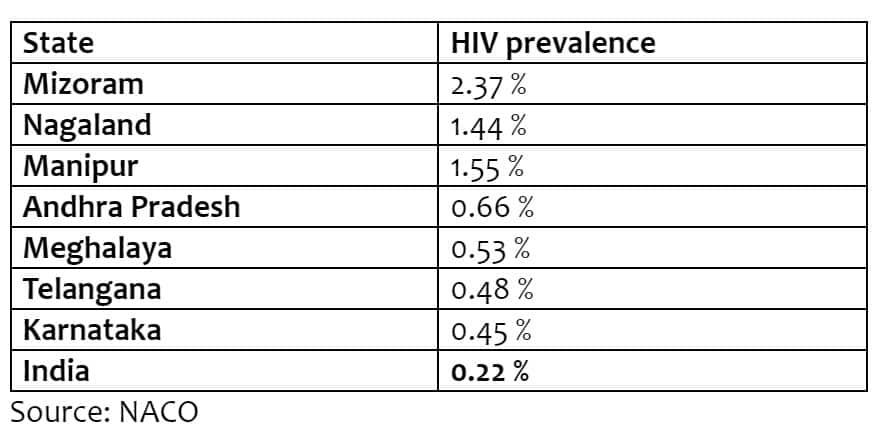World AIDS Vaccine Day: Prevalence of the disease in India, mRNA vaccine, need of Covid vaccination to Africa
The Concept of HIV vaccine awareness day came out of a speech delivered by the former US President Bill Clinton in 1997.
- Every year on May 18 World AIDS Vaccine Day or HIV Vaccine Awareness Day is observed globally.
- The Concept of HIV vaccine awareness day came out of a speech by former US President Bill Clinton.
- Clinton stressed upon the necessity of the vaccine to contain and eradicate the fatal disease.
Trending Photos
)
By Abhishek Sankhyayan
Every year on May 18 World AIDS Vaccine Day or HIV Vaccine Awareness Day is observed globally. The Concept of HIV vaccine awareness day came out of a speech delivered by the former US President Bill Clinton in 1997, where he stressed upon the necessity of the vaccine to contain and eradicate the fatal disease. So, let’s find out the prevalence of AIDS in Indian states and significance of covid vaccination to African countries.
WORLD IS BETTING ON mRNA PLATFORM
The effort to develop a vaccine against HIV started 35 years ago. National Institutes of Health (NIH) has opened the first clinical trial in 1987 but still we have not been able to find a breakthrough. Meanwhile the successful launch of covid vaccines in record time, the scientists are very keen on on mRNA platform technology. In March 2022, The National Institute of Allergy and Infectious Diseases (NIAID), part of the National Institutes of Health, launched a Phase 1 clinical trial evaluating three experimental HIV vaccines based on a messenger RNA (mRNA) platform.
The study will examine whether these three experimental HIV mRNA vaccines are safe and can induce required immune response. The name of mRNA vaccine are - 1) BG505 MD39.3 mRNA, 2) BG505 MD39.3 gp151 mRNA, and 3) BG505 MD39.3 gp151 CD4KO mRNA.
AIDS-RELATED DEATHS IN WORLD AND INDIA
As per UNAIDS data, since 2004, AIDS-related deaths have been reduced by 64%. In 2020, around 6,80,000 people died from AIDS-related illnesses globally, which was significantly down from a peak of 1.9 Million in 2004.
Similar trends appear in India as well. NACO data reports that in 2020, HIV claims 51,000 deaths in India, which is almost 80 % down from peak 2.5 lakh deaths in 2005.
HIV DOUBLES THE RISK OF COVID 19
Studies from England and South Africa have revealed that HIV affected people have double the risk of dying from COVID-19 in comparison to the rest of the population.
Sub-Saharan Africa is home to two thirds (67%) HIV infected people. But they are not able to source enough COVID-19 vaccines to protect themselves. As reported latest by ourworldindata.org only 17 % people have been fully vaccinated.
Reports also suggest that in 32 African and Asian countries, HIV testing declined by 41% and referrals for diagnosis and treatment declined by 37% during the first COVID-19 lockdowns in 2020, compared with the same period in 2019.
ANDHRA PRADESH TOPS IN AIDS RELATED DEATH
Official data reports that in 2020, Andhra Pradesh (7070) has highest number of AIDS related death, followed by Maharashtra (4037) and Karnataka (4060), Uttar Pradesh (2000), Bihar (1077) and Telangana (1.52 thousand). In addition, Odisha, Tamil Nadu, and Madhya Pradesh were other States with an estimated ARD (AIDS related death) higher than 1000 in 2020.

MAHARASHTRA HAS THE HIGHEST PLHIV
As per NACO data, in 2020 the figure of people living with HIV (PLHIV) in India was estimated at 23.19 lakh. Maharashtra has the highest number of PLHIV (3.90 lakh), followed by Andhra Pradesh (3.03 lakh), Karnataka (2.55 lakh). In addition to that Uttar Pradesh (1.61 lakh), Telangana, Tamil Nadu (1.58 lakh each), Bihar (1.30 lakh) and Gujarat (1.04 lakh) were the other States which had an estimate of more than one lakh PLHIV.

NE STATES HAS HIGHER HIV PREVALENCE
In 2020, Northeast states such as Mizoram( 2.37%) had the highest estimated adult HIV prevalence, followed by Nagaland (1.44%) and Manipur (1.15%). Andhra Pradesh (0.66%), Meghalaya (0.53%), Telangana (0.48%) and Karnataka (0.45%) were the other States with adult prevalence higher than 0.40%. Besides these States, Delhi, Maharashtra, Puducherry, Punjab, Goa and Tamil Nadu had an estimated adult HIV prevalence greater than the national prevalence (0.22%).

Stay informed on all the latest news, real-time breaking news updates, and follow all the important headlines in india news and world News on Zee News.
Live Tv







)
)
)
)
)
)
)
)
)
)
